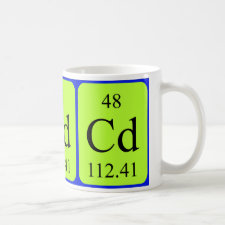
Authors: Zargar B, Khazaeifar A
Article Title: Synthesis of an ion-imprinted sorbent by surface imprinting of magnetized carbon nanotubes for determination of trace amounts of cadmium ions.
Publication date: 2017
Journal: Microchimica Acta
Volume: 184
Issue: (11)
Page numbers: 4521-4529.
DOI: 10.1007/s00604-017-2489-4
Abstract: The authors report on the preparation of sol-gel coated magnetized carbon nanotubes whose surface were imprinted with Cd2+ ions and the application of these materials on selective preconcentration of Cd2+ ions in different water samples. Fe3O4 particles and tetraethyl orthosilicate were used as a magnetic ingredient and as a surface modifier for the carbon nanotubes, respectively. The Cd2+-imprinted polymer was prepared by grafting copolymerization of Cd2+ ions as template, methacryloylsulfamethizole and 2-vinylpyridine as polymerizable ligands, methacrylic acid as functional monomer, and ethyleneglycoldimethacrylate as crosslinker. The resulting magnetic nanoparticles were characterized by Fourier transform infrared spectrometry, the Brunauer-Emmett-Teller method, and by scanning electron microscopy. Isothermal absorption, absorption kinetics and selectivity were studied in detail. The experimental conditions were optimized. Figures of merit include (a) a maximum adsorption capacity of 81 mg g-1; (b) relative selectivity coefficients of 2.41, 2.36, 1.41, 1.66, and 1.70 for Cd2+/Ni2+, Cd2+/Co2+, Cd2+/Zn2+, Cd2+/Cu2+, and Cd2+/Pb2+, respectively; (c) a detection limit of 0.29 ng mL-1, (d) an enrichment factor of 55.5; (e) an intra-day precisions of 1.13%; and (f) an inter-day precision of 1.39%. The method was successfully applied to the determination of cadmium in spiked samples including feed water of an ammonia production unit, tap water, industrial waste water from a petrochemical plant, river water from the Garrahi River, bay water from Khor Musa, and marsh water from the Shadegan wetland
Template and target information: cadmium ion, Cd(II)
Author keywords: Magnetized nanoparticle, Industrial water sample, Environmental water sample, Selective sorbent, Polymerizable ligand, SEM



Join the Society for Molecular Imprinting

New items RSS feed
Sign-up for e-mail updates:
Choose between receiving an occasional newsletter or more frequent e-mail alerts.
Click here to go to the sign-up page.
Is your name elemental or peptidic? Enter your name and find out by clicking either of the buttons below!
Other products you may like:
 MIPdatabase
MIPdatabase









